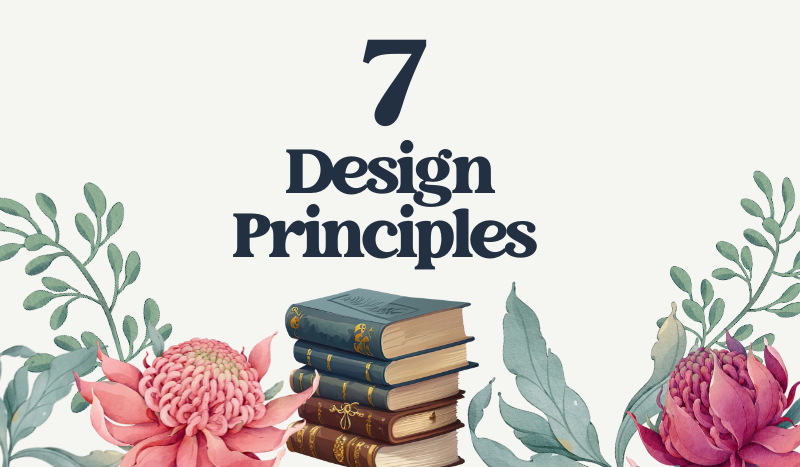
I remember back to university as a first year, our very first lesson was learning the design principles. Balance, Alignment, Hierarchy, Contrast, Repetition, Proximity & Space. They felt like a group of superheroes and we were tasked with an assignment of using them in typography. When the assignment was finished our lecturer showed my design to the class as an example of what not to do. I remember being so embarrassed – called out in front of my classmates, my spacing in all the wrong places just hanging out there in public for everyone to see😂
Thankfully I took that as a sign that I might need to practice a bit more – but if you haven’t heard of the design principles you are not alone and we all go through this learning curve.
1-Balance
- Balance is all about the visual weight of objects, colors, textures, and space. It doesn’t mean it has to be perfectly symmetrical, you can absolutely have something which is asymmetrically balanced – in fact this is usually a bit more appealing. Try to imagine your page like an invisible scale – does it weigh the same on both sides?
2-Alignment
- Sounds complicated, but just means really – is it lined up 😂 This principle means everything is placed neatly and almost like it’s sitting on an invisible grid.
3-Hierarchy
Hierarchy is the way our eye moves around the page – what it sees first, second and then everything else (primary, secondary and tertiary). You can pretty easily change the hierarchy of elements through size, color, contrast, and placement within the layout.
4-Contrast
- Contrast is hard to execute if you are just starting out and haven’t trained your design eye yet and is created with colors, sizes, or shapes than are usually opposites. It’s not just about black and white; think big versus small, bold versus subtle.
5-Repetition
Repetition is well known as pattern but it goes a lot deeper than this and is more about consistency of things like typography, color and graphics across a design as a whole – repeating some aspects of your design can bring a clear sense of unity, consistency, and cohesion. Think of a consistent color scheme or a recurring shape that becomes part of your brand identity.
6-Proximity
Proximity or the closeness of elements, groups related pieces on a page creates little visual groups. It helps declutter your design and provide a neat, organized look. For example you might put a header and subheader close together and visually the eye will see them as one piece.
7-Space
Finally, a very underrated principle is the power of space, or ‘negative space’. Empty space in a design declutters and brings unity to a design – less is more a lot of the time and sometimes the eye just needs a bit of nothingness to help understand a design better.
Wrapping it up – design principles are training wheels and as you grow as a designer they become second nature – you won’t even think about them consciously as you design. But while you are learning it’s important to keep them in mind, and practice actively using them in your design.
Happy creating,
Jessa



0 Comments